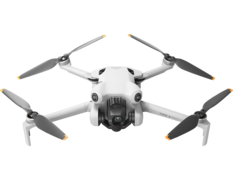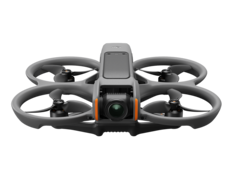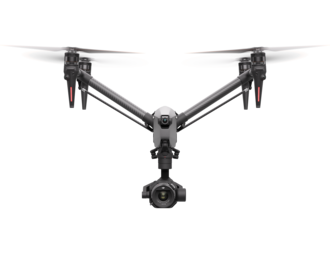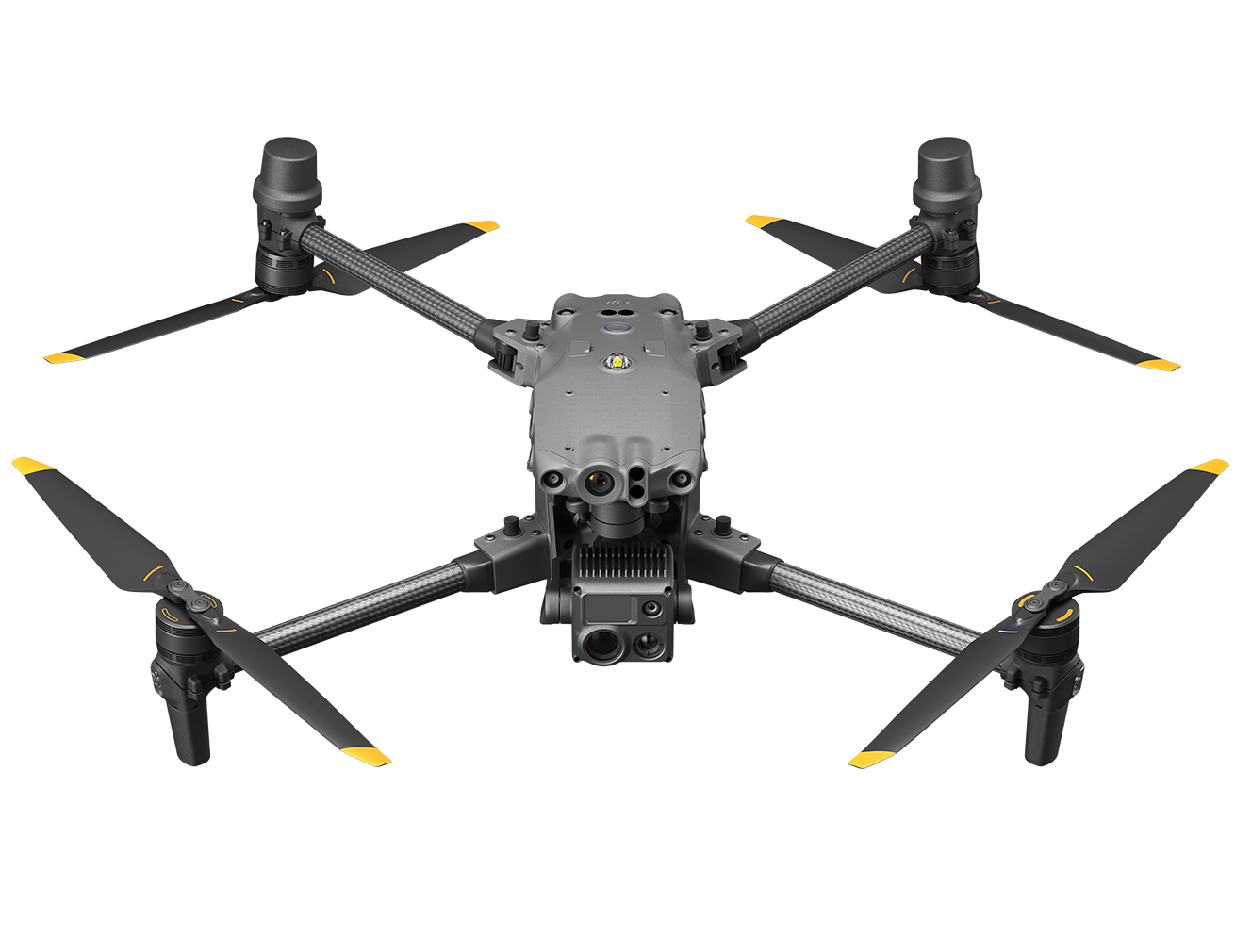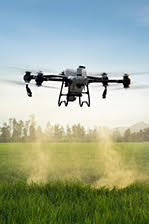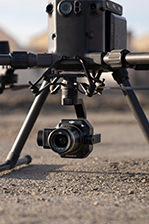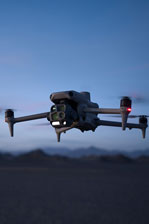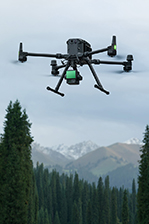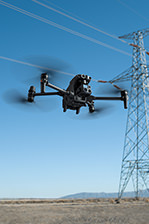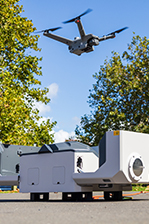DJI FlyCart 30 – Delivery Drone Coming to New Zealand
DJI has launched its flagship DJI FlyCart 30 aerial delivery drone globally, officially entering the drone delivery market for the first time. While it is still on its way to our shores, we're excited to be the exclusive New Zealand distributors of this game changing technology. So, what exactly does the DJI FlyCart 30 offer, and what are the core benefits of this new delivery drone? Read our blog now to find out more.
What is the DJI Flycart 30?
Suitable for a wide range of uses across different industries and projects, the DJI FlyCart 30 has a 4-axis, 8-propeller multirotor configuration, with a maximum load of 30kg in dual electric mode and a maximum range of 16km with full load. UK trials have already been completed by several organisations, where the aerial delivery drone concept was thoroughly tested, with medical and emergency deliveries seen as a high priority. The UK government has already approved a drone superhighway, which is due for completion in May 2024, further emphasising the viability and demand for a safe, secure drone delivery network.
.jpg)
Key DJI FlyCart 30 features
A long-distance heavy lifter with powerful signal and intelligence, DJI FlyCart 30 is a major step for low-altitude transportation. This new delivery drone supports two payload configurations – Cargo and Winch, detailed as follows.
Cargo mode
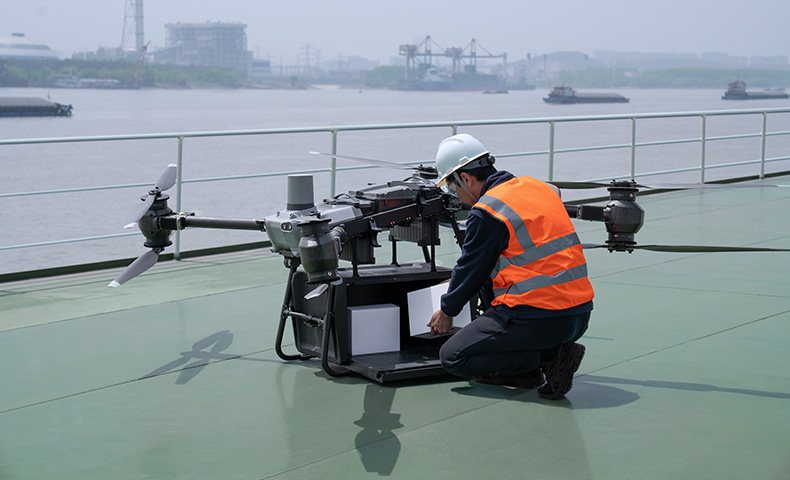
Land and deliver payloads from a cargo box with a maximum payload capacity of 40 kg – this system supports automatic weighing and quick release. The EPP cargo case’s internal dimensions are approximately: length 573mm, width 416mm, height 305mm, giving it a maximum volume of 70 litres. With its convenient foldable design, the cargo container can easily be disassembled and assembled within 3 minutes for efficient loading and unloading. In addition, this mode supports weight and centre of gravity detection, ensuring correct loading and safer, more stable flight.
Winch mode
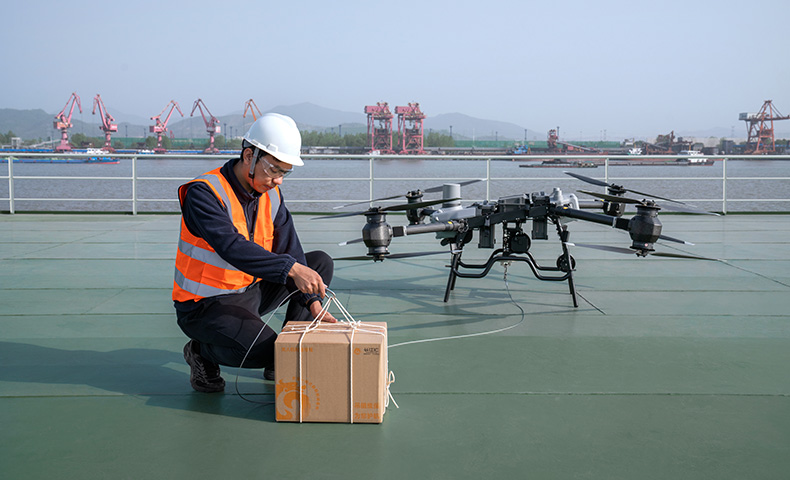
Hover and deliver payloads with a descending rope that can be controlled manually or automatically – the winch is ideal for scenarios where goods can’t go in the cargo box, or where the drone can’t land safely. The winch’s maximum retractable weight is 40 kg, the maximum release length is 20 metres, and the fastest retractable speed can reach 0.8 m/s. In addition, it has an intelligent anti-sway function to prevent unnecessary swinging of goods.
Enhanced safety features
.gif)
With the release of this groundbreaking technology comes the need for robust safety features and considerations. DJI has gone above and beyond for the DJI FlyCart 30, with a host of enhanced safety features, as follows.
Built-in parachute: The integrated parachute automatically deploys during extreme scenarios, dramatically reducing risk of injuries and property damage. It also includes safeguards such as power-on self-check, independent power supply, oar stop protection before opening the parachute, and sound and light alarms.
Landing protection: During the take-off and landing process, multiple safety guarantee features kick in, such as sound and light prompts and a 6-second delay in propeller launch. With the addition of an RTK module to achieve centimetre-level high-precision positioning, take-off and landing is made even more accurate and safe.
Backup points: Program the drone to land in alternate points, in the event it needs to make an emergency landing at a location other than what was originally intended.
Obstacle avoidance: The drone is equipped with front and rear active phased array radars and a dual binocular vision system, delivering multidirectional intelligent obstacle avoidance – the craft senses terrain and obstacles and automatically reroutes. There is also a built-in ADS-B signal receiver, which can offer warnings of other manned aircraft in the area.
Dual battery system: Should one battery go bad during flight, DJI FlyCart 30 is powered by a dual battery system for redundancies – the second battery kicks in and allows the drone to remain flying safely.
DJI Pilot 2: Displayed on the controller, DJI Pilot 2’s primary function is to show the real-time flight status of drones and cargo delivery conditions – but safety is also at its forefront. It displays the power of the drone in real time mid-flight, so you can confirm mileage accrued and time needed to get to the target point. In the event of extreme weather or other abnormalities, DJI Pilot 2 will issue warnings and can help navigate the drone to alternate landing points.
Note: In order to maximise the full benefits of DJI Flycart 30 with beyond visual line of sight or extended visual line of sight operations in New Zealand, you would need to include these privileges in your 102 exposition and have them approved by the CAA. We’re excited to support our customers in taking these steps to make this platform a game changer for safe, efficient, and sustainable drone operations.
Additional key features
.gif)
Heavy Load: 30kg maximum carrying weight (dual batteries); 40kg maximum carrying weight (single battery).
Long Distance: 28km maximum flight distance (no load, dual battery); 16km maximum flight distance (30kg load, dual battery). Maximum flight time of 18 minutes with double battery and 30kg load.
Fast Travel: Maximum flight speed of 20m/s; 15m/s cruising speed.
All-weather Operations: IP55 weather protection; -20°C to 45°C working environment temperature; 12m/s maximum wind-speed resistance.
Strong Signal: DJI FlyCart 30 is equipped with DJI O3 image transmission, and the image transmission distance can reach up to 20 km. Operators can also benefit from 4G enhanced image transmission.
DJI Transport: One-stop airborne cloud platform. Efficiently plan equipment tasks, fully control operation dynamics, centrally manage team resources, and statistically analyse multi-dimensional data.
DJI FlyCart 30: Key Specifications
The table below provides an overview of some of the key specifications of the DJI FlyCart 30.
| Empty weight | 42.5kg (without batteries) 65kg (with dual batteries) |
| Maximum take-off weight | 95 kg (standard cargo box, near sea level) |
| Dimensions (arms extended, propellers extended) | Length 2800 mm, width 3085 mm, height 947 mm |
| Maximum flight distance (no load) | Dual battery: 28km Single battery: 12km |
| Maximum flight distance (full load) | Double battery (30kg load): 16km Single battery (40kg load): 8km |
| Maximum flight time (full load) | Double battery (load 30kg): 18 minutes Single battery (load 40kg): 9 minutes |
| Operating temperature | -20°C to 45°C |
| IP Rating | IP55 |
| Maximum horizontal flight speed | 20 m/s (with a load of 30kg) |
| Maximum flight altitude | 6000 metres (without load) |
| Maximum wind speed | 12 m/s (with a load of 30kg) |
| Maximum Flight Altitude | 6,000 metres (without load); 3,000 metres is maximum safe flight altitude for the drone with a full load |
| Image Transmission | 20 km (FCC) 8 km (CE/SRRC/MIC) |
| 4G | 4G Convergence Function: Yes, DJI enhanced image transmission module 4G Dongle Models: DJI Enhanced Video Transmission Module |
Delivery Drone Benefits
.gif)
The benefits of using aerial delivery drones like the DJI FlyCart 30 are numerous, and include:
Improved logistics: Drone deliveries are completed in a straight line from sorting centres to package destination, improving operational logistics efficiency.
Speed: As a direct-to-customer airmail solution, delivery drones are far faster than traditional delivery methods.
Reduced road traffic: According to Amazon, the majority of customer packages weigh less than five pounds (2.27 kg), making them ideal for drone technology. If drones replace light package deliveries, there will be more room in delivery vehicles and fewer vehicles on the road.
Cost: While the initial price of drone technology may be high, there is far less labour involved, making drone deliveries more cost-effective over time.
Environmentally-friendly: DJI drones like the FlyCart 30 run on electricity, making them green solutions, and with fewer vehicles on the road, carbon emissions would also drop.
From food and retail, to medical supplies, disaster relief, and remote area access, the potential use cases for the DJI FlyCart 30 grows daily. With its global launch on January 11th, we are counting down to its imminent arrival on our shores in the coming months. What do you think of this new technology, and would you look to use this drone in New Zealand?
Contact our commercial team today to discuss the DJI Flycart 30 in more details, and find out how you can harness the potential of this innovative aerial delivery drone in your operations and projects.
SPEAK WITH A SPECIALIST
Contact our team today to discuss the right solution for you.



